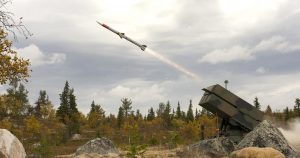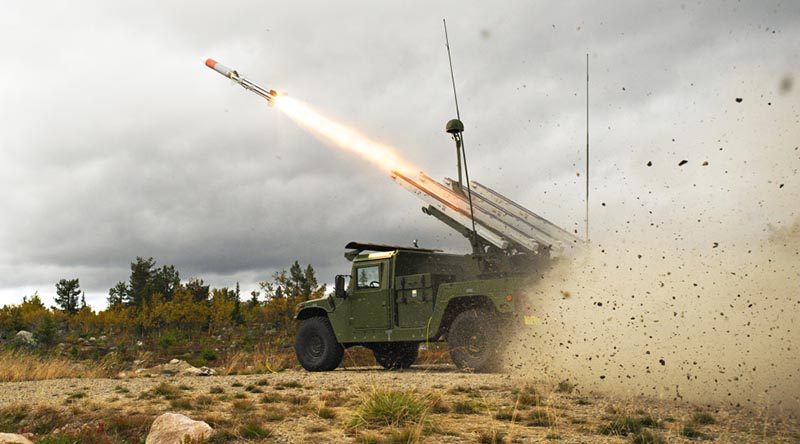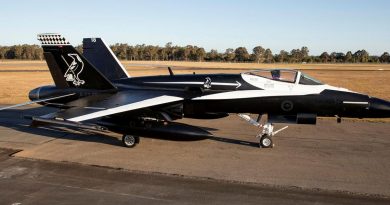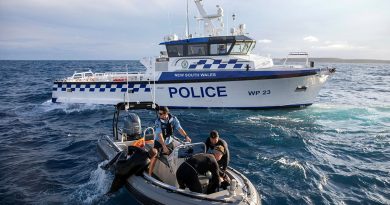ADF releases images of future missile-defence platform
Share the post "ADF releases images of future missile-defence platform"

As reported in April, Defence commissioned Raytheon to develop a short-range ground-based air-defence system to improve protection for deployed personnel – but these images of a similar system were only released via the Defence Image Library today.
CAPTION: A NASAMS high-mobility launcher on a HMMWV, firing an AMRAAM missile. An Australian NASAMS is likely to be carried by Hawkei. Raytheon photo.
The Integrated Air and Missile Defence Program – the inner-most layer of Australia’s enhanced integrated air and missile capability – will cost up to $2 billion.

The capability will be operated by the Army’s 16th Air Land Regiment.
Australia’s current short-range capability is 30 years old and is due to be retired in the early 2020s.
Raytheon Australia was given a single-supplier limited request for tender to adapt its in-service National Advanced Surface to Air Missile System (NASAMS) for the Australian Defence Force.
Thales Australia’s ‘Hawkei’ protected mobility vehicle is expected to be the carrier platform, with Canberra-based CEA Technologies expected to adapt their phased array radar system (as incorporated on ANZAC-class frigates) at the heart of this system.
.
.
.
.
.

.
.
Share the post "ADF releases images of future missile-defence platform"






What was wrong with the original configuration of the NASAMS/NASAMS-2 package? Why is Raytheon Australia developing a new radar/fire control when this system already has one? It works, and is in widespread use, whereas CEA will have to make one from scratch. How long is that going to take? Also will Australia go with the protected-box launchers or are they going to have the AMRAAMs lying on launch racks at the back of Hawkeis exposed to the elements? Australians have had enough of behind-time/over-budget defence procurement debacles. Let’s hope this program does not add to that list.